Before you picture wide-open prairies dotted with cattle and guitar-toting men in big hats, you need to know a bit of truth that might surprise you. The mythical cowboy of Wild West movies owes more to Mexican tradition than most people realize. Mexican cowboys, known as vaqueros, set the gold standard way before folks up north started herding cattle. Everything from the way they handled lassos to the design of their saddles became building blocks for cowboy culture, not just south of the border but across the American West.
Who Were the Vaqueros? The Origins of Mexican Cowboys
Back in the 1500s, when Spanish settlers rolled into Mexico, they brought cattle, horses, and ranching techniques from Spain. But the wild lands of the New World were not much like the European meadows they’d left behind. They needed a whole new set of skills to make their herds thrive. Native Americans in Mexico learned how to handle horses and cattle, mixing Spanish ideas with Indigenous know-how. This mash-up sparked the birth of the vaquero, which comes from the Spanish word “vaca,” meaning cow.
Vaqueros did much more than round up cattle. They became expert horsemen, skilled at roping, branding, and wrangling huge herds through brushy scrubland and across rivers. Their lifestyle wasn’t just about work—it was a wild blend of bravery, grit, and improvisation. They invented gear like the heavy serape (a type of poncho to ward off cold or rain) and flat-brimmed hats for hot days under the sun. Chaps, spurs, and lariats all found their roots with the vaqueros. These things didn’t just appear overnight. They came out of real daily needs on the dusty plains and rocky deserts.
The day-to-day of a vaquero was nothing like a desk job. From sunrise, they’d be up tending the herds in all weather. At night, it wasn’t uncommon for them to sleep beneath the stars, listening for coyotes or rustlers. This tough existence bred a culture of honor and loyalty, but also celebration. Vaqueros loved music, dance, and telling stories around a campfire. Their culture mixed Spanish, Indigenous, and African traditions, making something totally unique. Some families passed down the life of a vaquero for generations, turning ranching into a way of life as deep as any family tradition.
One thing worth pointing out is how vaquero society was built on both necessity and skill. In the 18th and 19th centuries, cattle ranching exploded across northern Mexico, especially in places like Jalisco, Durango, and Coahuila. Thousands of vaqueros earned their living rounding up longhorns or managing sprawling ranchos (ranches). Records from the late 1700s even mention huge rodeos (round-ups) with vaqueros showing off their riding and roping tricks—events that would eventually morph into what Americans know as the rodeo.
During Mexico’s colonial period, the hacienda system (basically, huge ranches managed by wealthy landowners) dominated the landscape. Vaqueros worked as laborers under powerful patrons, and their status often fell between free men and peons. Even so, the reputation of vaqueros soared. They were respected for their fearlessness, but also for their knowledge of horses, cattle, and the land itself. In fact, the cowboy reputation would spread far beyond Mexico.
| Fact | Details |
|---|---|
| First recorded vaqueros | Early 1500s, New Spain (now Mexico) |
| Origin of the word | From Spanish "vaca" (cow) |
| Signature gear | Serape, sombrero, spurs, chaps, lariat |
| Influence | Developed most cowboy tools and riding styles now common in U.S. |
| Key regions | Northern Mexico: Jalisco, Coahuila, Durango |
There’s a reason why “cowboy” culture looks so familiar across North America. When hundreds of thousands of cattle moved north during the 1800s “Texas cattle drives,” many of the herders were vaqueros working on both sides of the border. Through their work and wanderings, they spread their lingo, gear, and signature moves—things still used by modern ranch hands from Montana to the high plains of Chihuahua.
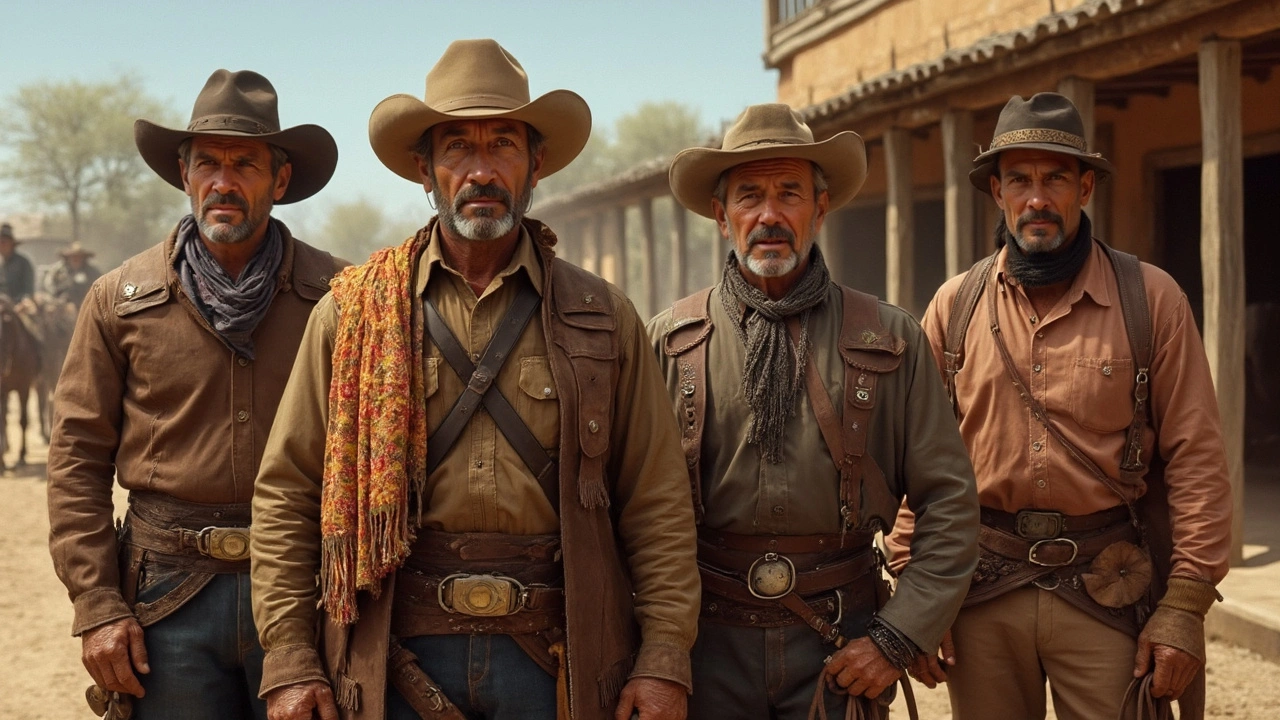
Vaquero Culture: Traditions, Skills, and Daily Life
If you think vaquero life was just about chasing cows, you’re missing half the story. Sure, managing herds was the daily grind, but vaqueros stacked up a wealth of traditions, skills, and quirks that turned an ordinary rancher into a folk hero. Their culture has layers—there’s style, music, honor codes, and a toolkit unlike anything you’ll find in the suburbs. The famous wide-brimmed sombrero? That started as sun protection for vaqueros. Even their boots—hard-toed and hand-stitched—were built tough for rough terrain. Chaps, or “chaparreras,” were invented to shield legs from prickly brush and snake bites while riding through thick country.
Vaqueros didn’t just “look” good; their methods were sharp. They learned animal psychology—knowing when to be gentle, when to be firm, and how to read an animal’s mood. Most ranch work happened from the back of a horse, making both riding and horsemanship the badge of honor for a true vaquero. The lariat (or lasso) is a perfect example. Made from braided rawhide or leather, it was always close at hand. Roped expertly, the vaquero’s lasso turned chaotic herd work into a choreography. The way they spun, threw, and tightened the loop influenced modern rodeo tricks around the world.
Cattle brands—symbolic marks burned onto hides—were invented to show ownership. Branding was as much an art as a science. Ranchers created unique symbols passed down like fingerprints through a family line. Making and applying those brands became an annual rite for vaqueros. And talk about hard work: during branding season, the days could last as long as there was daylight, with vaqueros bringing in calves, sorting, roping, tying, and marking hundreds in a single stretch.
Food had its own twist. Since vaqueros lived out on the range, their meals had to be portable and lasting. Staples included beans, tortillas, dried beef (carne seca), and something called “chile colorado,” a spicy sauce for flavor. For celebrations, you’d see feasts with barbacoa (slow-cooked meat in a pit) and hearty stews. Water was precious. Vaqueros learned tricks for carrying it in animal skins or earthen jugs, tied to saddles for weeks away from home.
The social world of vaqueros ran deep, too. There was respect for elders, tight-knit work groups, and a lively oral tradition. Songs known as “corridos” (ballads) told stories about haunts, legendary rides, or run-ins with dangerous outlaws. A nightly campfire was more than just warmth; it was the glue that held the crew’s spirit together. That’s where jokes, tales, and plans for the next day took root.
There’s one thing you can’t skip: the vaquero’s code of honor. Their unwritten rules banned betrayal and lying—and punished cowards. Disputes got settled on horseback with a duel, or through wrestling, pitting strength and skill rather than guns. Many of these customs crept into U.S cowboy movies, giving rise to the famous “cowboy code.” But while American cowboys often got the glory, the original vaqueros went about their business quietly, proud of their craft.
By the late 1800s, vaquero culture had traveled north, especially after the Mexican-American War when land that was once part of Mexico became Texas, New Mexico, Arizona, and California. Local ranchers took up Mexican habits. Even now, if you head to a rodeo in Wyoming, you’ll spot some moves and gear that wouldn’t exist if it wasn’t for Mexican ingenuity. The vocabulary’s a giveaway, too. “Lariat,” “chaps,” and “rodeo” are all direct imports from Spanish, not English. Add “stampede,” “bronco,” and you can kind of see who taught who when it came to cattle wrangling.
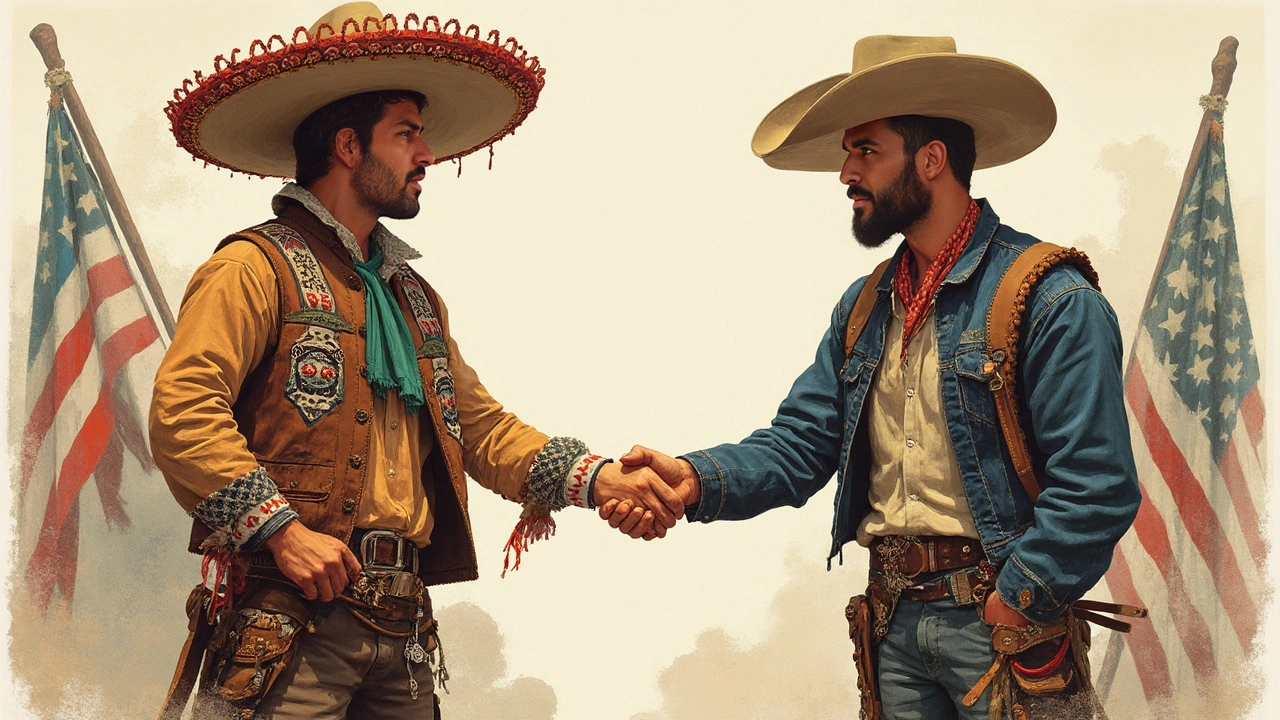
The Vaquero Legacy: Influence on Modern Cowboys and Popular Culture
People love the cowboy myth—from gritty movies to country songs, everyone knows the look: hat tipped low, boots scuffed, and a wild glint in the eye. But the heart of cowboy culture runs deep south of the border, and it still shapes ranch life today. Walk into any tack shop in Texas or watch a pro rodeo, and the fingerprints of vaquero ingenuity pop up everywhere. Their gear is mostly unchanged, and their rituals stick around, even in modern times.
The influence is obvious in the saddle. The high Mexican saddle, or “silla,” shaped how U.S. cowboys designed their own saddles, making it easier to handle a rope or take a long ride. The style of roping and riding events at rodeos—things like team roping, bronc riding, and trick roping—are pure vaquero. If you check out the costumes at a Mexican charreada (a traditional rodeo), you’ll see even more. Everything from the intricately embroidered pants to silver spurs got copied by later generations everywhere cattle live. Even the rodeo itself grew out of Mexican round-up traditions, only later getting its American twist.
The vaquero’s reach goes beyond just equipment. The attitude—resourceful, tough, and proud—became the model for what people expect in a cowboy. Friendliness with strangers, respect for nature, quick thinking, and stubborn loyalty are all vaquero traits written large in cowboy lore. Their language even slipped into American English: words like “mustang,” “lariat,” “stampede,” and “rodeo” are all Spanish. If you study the history of western ranching, you’ll find that Mexican vaqueros often ended up as the best hands on the range. Historical records show that ranches across California and Texas in the 1850s hired skilled vaqueros as trail bosses or lead wranglers. Without them, the famous cattle drives up the Chisholm Trail would've been a mess.
Pop culture hasn’t quite given enough credit, but the tide is turning. There’s a new respect for Latino and Mexican stories in western movies and books. Museums and festivals celebrate vaquero traditions every year in places like El Paso, Laredo, and Los Angeles. If you ever get to see a charreada, you’ll spot centuries-old horsemanship that makes modern rodeos look tame. And if you keep your eyes open at night—just maybe—you’ll spot a kid in a wide-brimmed hat riding bareback, still keeping the vaquero legend alive.
Here’s a tip: If you want to learn more or try some vaquero techniques yourself, many modern ranches, especially in Mexico and the U.S. Southwest, offer horsemanship clinics. They cover classic vaquero ways of roping, cattle handling, and gear making. It’s worth checking out, even if you’ve never ridden a horse. Watching a master vaquero spin a rawhide lasso or ride a tricky horse is something you won’t forget.
For folks who love gear, look for hand-tooled saddles, silver-accented spurs, and custom-made chaps—classic vaquero trademarks. And don’t forget to try Mexican cowboy food: slow-cooked barbacoa, beans, and thick, homemade tortillas. It’s about as close as you’ll get to sharing a meal with a living legend from the range.

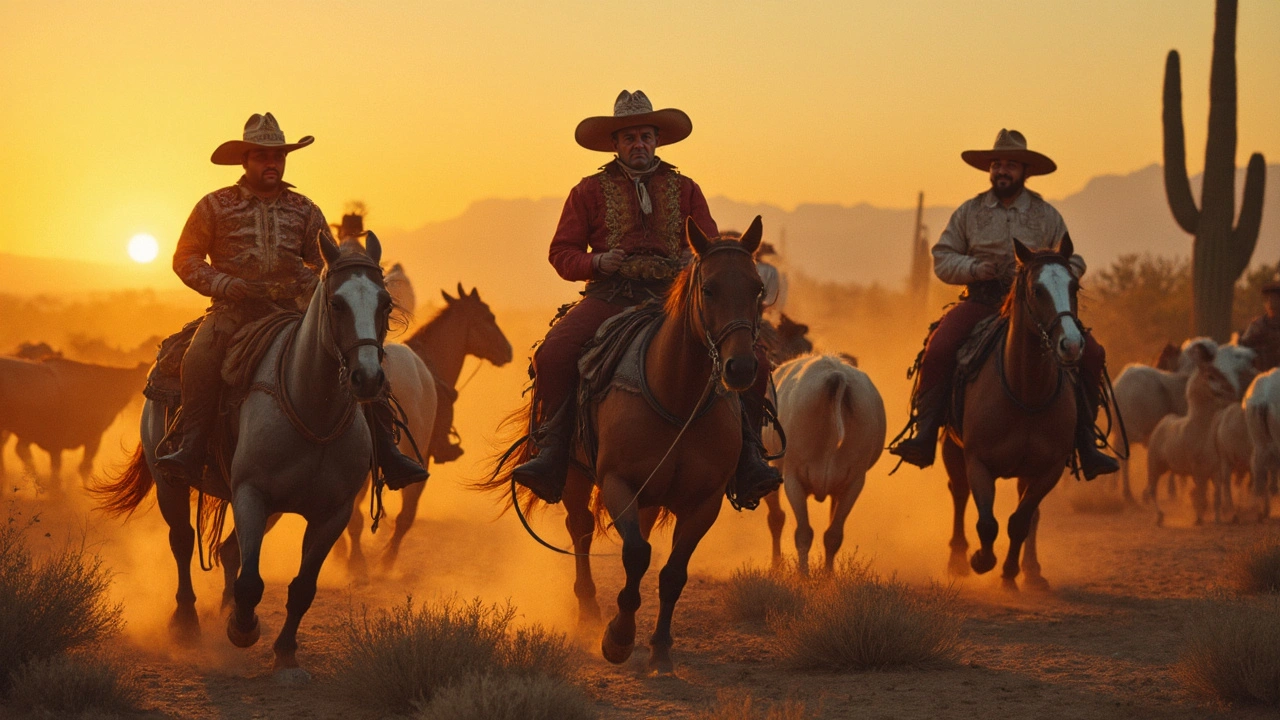
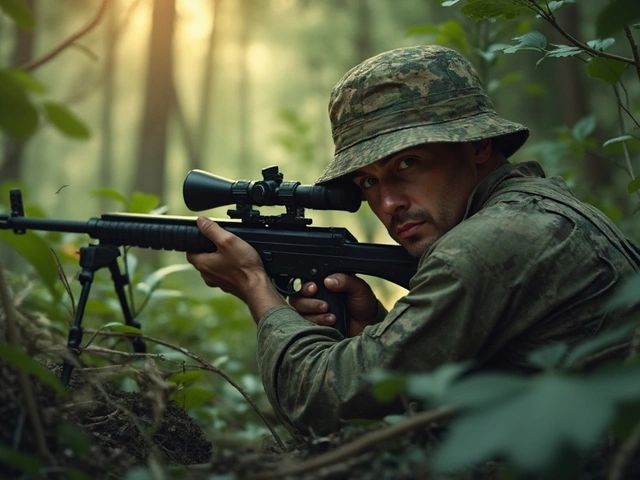
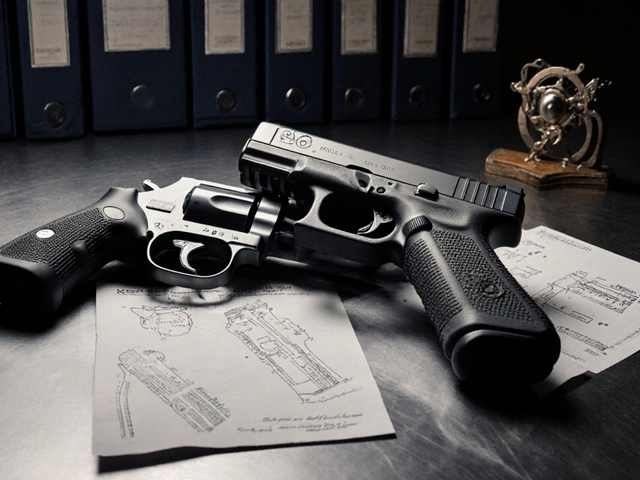
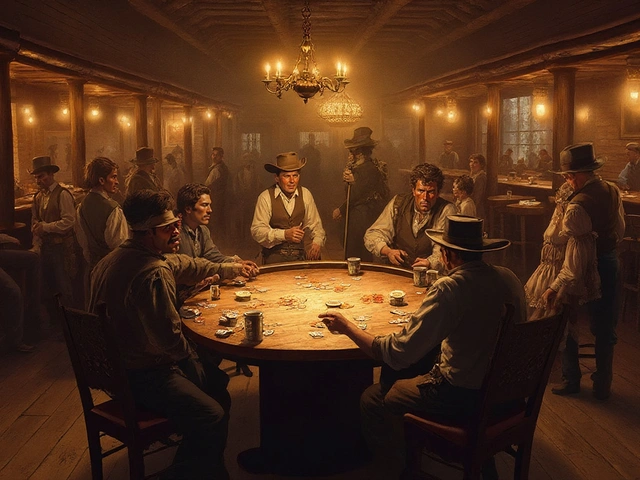
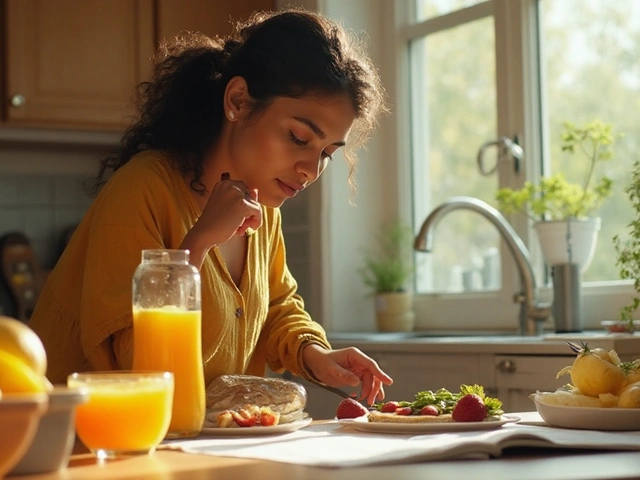
Rajat Patil
July 18, 2025 AT 15:00